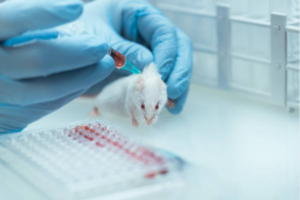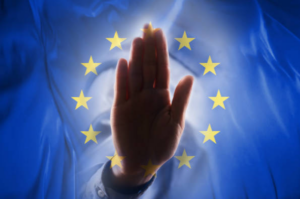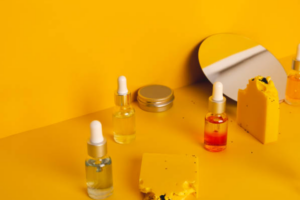Animal Welfare and Cosmetic Regulations

In the world of beauty and cosmetics, we often focus on achieving that perfect look, whether it’s through skincare products or makeup. However, there’s a side of the industry that’s equally important but often overlooked—the ethical treatment of animals in cosmetic testing. In recent years, significant strides have been made in the field of animal welfare, and cosmetic regulations are evolving to protect animals from unnecessary harm. In this blog post, we’ll explore how these laws are changing and what it means for the beauty industry.
The Dark Side of Beauty: Animal Testing
Animal testing has been a common practice in the cosmetics industry for most of the 20th century. It was driven by the desire to ensure the safety and effectiveness of products before they were introduced to the market. Commonly used animals for testing included rabbits, guinea pigs, mice, and rats, among others.
These animals were subjected to a range of tests, many of which were painful and distressing. Some of the commonly conducted tests included:
- Skin Irritation Tests: Products were applied to the animals’ skin, often causing painful reactions, redness, and irritation.
- Eye Irritation Tests: Substances were placed directly into the eyes of animals, leading to discomfort, pain, and potential blindness.
- Lethal Dose Testing: Animals were force-fed products to determine the lethal dose, often resulting in severe suffering and death.
Ethical Concerns and Public Outcry
The widespread use of animal testing in the cosmetics industry raised significant ethical concerns. Activists, animal welfare organizations, and concerned consumers highlighted several key issues:
- Unnecessary Suffering: Many argued that the suffering inflicted upon animals in cosmetic testing was unnecessary, as there were alternative testing methods available.
- Ineffectiveness: Critics pointed out that animal testing often failed to accurately predict human reactions to products, leading to questionable scientific value.
- Public Outcry: High-profile campaigns, protests, and exposés by organizations such as PETA (People for the Ethical Treatment of Animals) and the Humane Society drew public attention to the cruelty of animal testing, leading to widespread condemnation.
- Consumer Backlash: As awareness of animal testing practices grew, consumers began to express their disapproval by boycotting brands that engaged in animal testing and demanding cruelty-free alternatives.
The Changing Attitudes
As a result of these concerns and mounting public pressure, attitudes within the cosmetics industry began to change. Many companies started to reevaluate their testing methods and seek alternatives. Some of the factors that contributed to this shift included:
- Advancements in Science: Scientific progress led to the development of alternative testing methods that were both more humane and more reliable in predicting human reactions.
- Legislation and Regulation: Governments around the world began to take action to regulate or ban animal testing for cosmetics, pushing companies to find alternative approaches.
- Market Demands: As consumers increasingly sought out cruelty-free products, companies recognized the economic benefits of going cruelty-free, further incentivizing the shift.

The Turning Point: The EU Ban on Animal Testing
Historical Significance of the EU Ban
The European Union’s (EU) comprehensive ban on animal testing for cosmetics marked a watershed moment in the global movement towards cruelty-free practices. This ban, which came into effect in 2013, was the most far-reaching and influential regulation of its kind. It demonstrated the EU’s commitment to animal welfare and set a compelling example for other nations and regions to follow.
Key Provisions of the EU Ban
The EU’s ban on animal testing for cosmetics included several crucial provisions:
- Testing Ban: The core of the regulation prohibited the testing of finished cosmetic products and cosmetic ingredients on animals within the EU member states.
- Marketing Ban: Equally significant was the marketing ban, which prohibited the sale of cosmetic products and ingredients that had been tested on animals, regardless of where the testing took place. This measure applied not only to products manufactured within the EU but also to those imported into the region.
Global Impact and Ripple Effect
The EU’s bold move had a profound impact on the cosmetics industry and animal welfare worldwide:
- Industry Compliance: In response to the EU ban, many global cosmetic brands swiftly adjusted their testing practices to comply with the new regulations. Companies that wanted to continue selling in the lucrative EU market had no choice but to adopt cruelty-free testing methods.
- Inspiration for Others: The EU ban served as an inspiration and model for other nations and regions. Countries across the globe began to consider similar bans or restrictions on animal testing for cosmetics.
- International Trade Considerations: The EU’s marketing ban also raised questions about international trade and encouraged other countries to rethink their own regulations. For instance, countries that wished to export cosmetics to the EU had to ensure their products met the cruelty-free standards set by the region.
- Consumer Awareness: The EU ban contributed significantly to raising consumer awareness about the issue of animal testing in cosmetics. It empowered consumers to make more informed choices and fueled the demand for cruelty-free products.
The Evolution of Testing Methods
In addition to setting a strong precedent, the EU ban prompted the cosmetics industry to invest in research and development of alternative testing methods. These methods, such as in vitro testing using human cells and computer modeling, proved to be not only more humane but also more scientifically accurate in predicting human responses.
The Ongoing Effort for Global Change
While the EU ban on animal testing was a landmark achievement, there is still much work to be done. Not all countries have adopted similar regulations, and some regions continue to require animal testing for certain products. Organizations and advocates worldwide are actively campaigning for more comprehensive bans and pushing for the adoption of cruelty-free testing methods.
The U.S. Response: Cruelty-Free Cosmetic Regulations
While the EU was leading the charge, the United States also saw significant progress in cruelty-free cosmetics regulations. Several states, including California, Illinois, and Nevada, have enacted laws to ban or restrict animal testing for cosmetics. Additionally, the Humane Cosmetics Act has been introduced at the federal level, which, if passed, would prohibit animal testing for cosmetics across the entire country.
Cosmetic Alternatives: A Shift in Testing Methods
One of the critical factors in the changing landscape of animal testing regulations is the development of alternative testing methods. Advances in technology have allowed scientists to create sophisticated in vitro tests, computer modeling, and human cell-based assays that can accurately predict the safety and efficacy of cosmetic products without harming animals.
These alternatives have not only proven to be more ethical but also more cost-effective and efficient for companies. They eliminate the need for expensive and time-consuming animal testing, leading to faster product development and reduced costs.

The Role of Consumers: Demand for Cruelty-Free Products
Consumer awareness and demand for cruelty-free products have played a pivotal role in driving change in the beauty industry. As more consumers become conscious of the ethical implications of their purchases, they are actively seeking out products that are not tested on animals. This shift in consumer behavior has forced brands to reformulate their testing methods and create cruelty-free product lines to remain competitive.
Certifications and Labels: Navigating the Cruelty-Free Landscape
As the demand for cruelty-free products grows, so does the need for transparency in labeling. Various organizations and certifications, such as Leaping Bunny and PETA’s Beauty Without Bunnies program, have emerged to help consumers identify and choose cruelty-free products confidently. These labels provide a reliable way for shoppers to support brands that align with their values.
Global Impact: The Ripple Effect of Change
The impact of these changing laws and consumer preferences is not limited to the EU and the United States. Many countries around the world are following suit, either by implementing their own bans on animal testing or by adopting cruelty-free testing methods. China, a significant player in the cosmetics industry, has also made progress by revising its regulations to allow the sale of certain imported cruelty-free cosmetics.
This global shift towards cruelty-free practices is encouraging companies to rethink their international strategies and prioritize cruelty-free testing methods to gain access to broader markets.
The Future of Animal Welfare and Cosmetic Regulations
While significant progress has been made, there is still work to be done. Some countries and regions continue to require animal testing for certain products, particularly those labeled as “medical” or “sunless tanning.” Activists, organizations, and consumers continue to advocate for stricter regulations and the development of even more advanced alternative testing methods.
The future of animal welfare and cosmetic regulations looks promising. As more nations join the cruelty-free movement, the cosmetics industry will undoubtedly see a continued shift toward ethical practices and the eventual eradication of animal testing.

The beauty industry’s transformation towards cruelty-free practices and ethical treatment of animals is a testament to the power of consumer demand, scientific progress, and legislative action. As we continue to prioritize animal welfare and advocate for more humane testing methods, we contribute to a brighter future where beauty products can enhance our lives without causing harm to innocent creatures. By supporting cruelty-free brands and staying informed about evolving regulations, we can all play a role in shaping a more compassionate beauty industry. Together, we can ensure that beauty truly is cruelty-free.

